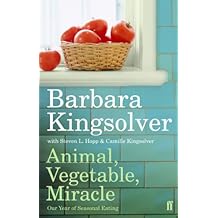
Steven Hopp:
On July 9, 2006, in Edinburgh, Scotland, the world lost one of its most successful local-foods advocates of all time: John Raeburn. At the beginning of World War II when Germany vowed to starve the U. K. by blocking food imports with U-boats, Raeburn, an agricultural economist, organized the “Dig for Victory” campaign. British citizens rallied, planting crops in backyards, parks, golf courses, vacant lots, schoolyards, and even the moat of the Tower of London. These urban gardens quickly produced twice the tonnage of food previously imported, about 40 percent of the nation’s food supply, and inspired the “Victory Garden” campaign in the United States. When duty called, these city farmers produced.
A similar sense of necessity is driving a current worldwide growth of urban-centered food production. In developing countries where numbers of urban poor are growing, spontaneous gardening on available land is providing substantial food: In Shanghai over 600,000 garden acres are tucked into the margins of the city. In Moscow, two-thirds of families grow food. In Havana, Cuba, over 80 percent of produce consumed in the city comes from urban gardens.
In addition to providing fresh local produce, gardens like these serve as air filters, help recycle wastes, absorb rainfall, present pleasing green spaces, alleviate loss of land to development, provide food security, reduce fossil fuel consumption, provide jobs, educate kids, and revitalize communities. Urban areas cover 2 percent of the earth’s surface but consume 75 percent of its resources. Urban gardens can help reduce these flat-footed ecological footprints.
For more information visit www.cityfarmer.org or www.urbangardeninghelp.com.
No comments:
Post a Comment